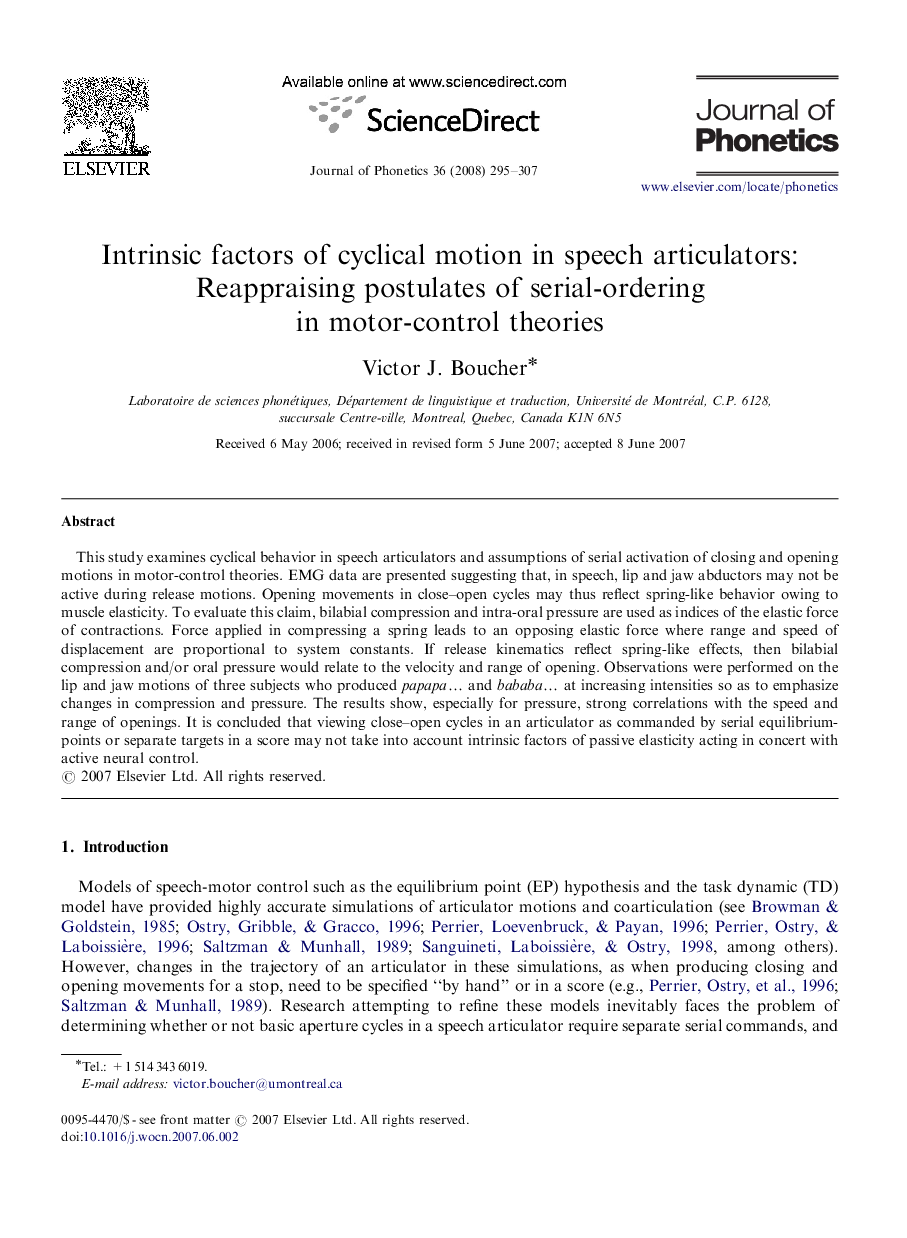| Article ID | Journal | Published Year | Pages | File Type |
|---|---|---|---|---|
| 1101011 | Journal of Phonetics | 2008 | 13 Pages |
This study examines cyclical behavior in speech articulators and assumptions of serial activation of closing and opening motions in motor-control theories. EMG data are presented suggesting that, in speech, lip and jaw abductors may not be active during release motions. Opening movements in close–open cycles may thus reflect spring-like behavior owing to muscle elasticity. To evaluate this claim, bilabial compression and intra-oral pressure are used as indices of the elastic force of contractions. Force applied in compressing a spring leads to an opposing elastic force where range and speed of displacement are proportional to system constants. If release kinematics reflect spring-like effects, then bilabial compression and/or oral pressure would relate to the velocity and range of opening. Observations were performed on the lip and jaw motions of three subjects who produced papapa… and bababa… at increasing intensities so as to emphasize changes in compression and pressure. The results show, especially for pressure, strong correlations with the speed and range of openings. It is concluded that viewing close–open cycles in an articulator as commanded by serial equilibrium-points or separate targets in a score may not take into account intrinsic factors of passive elasticity acting in concert with active neural control.
